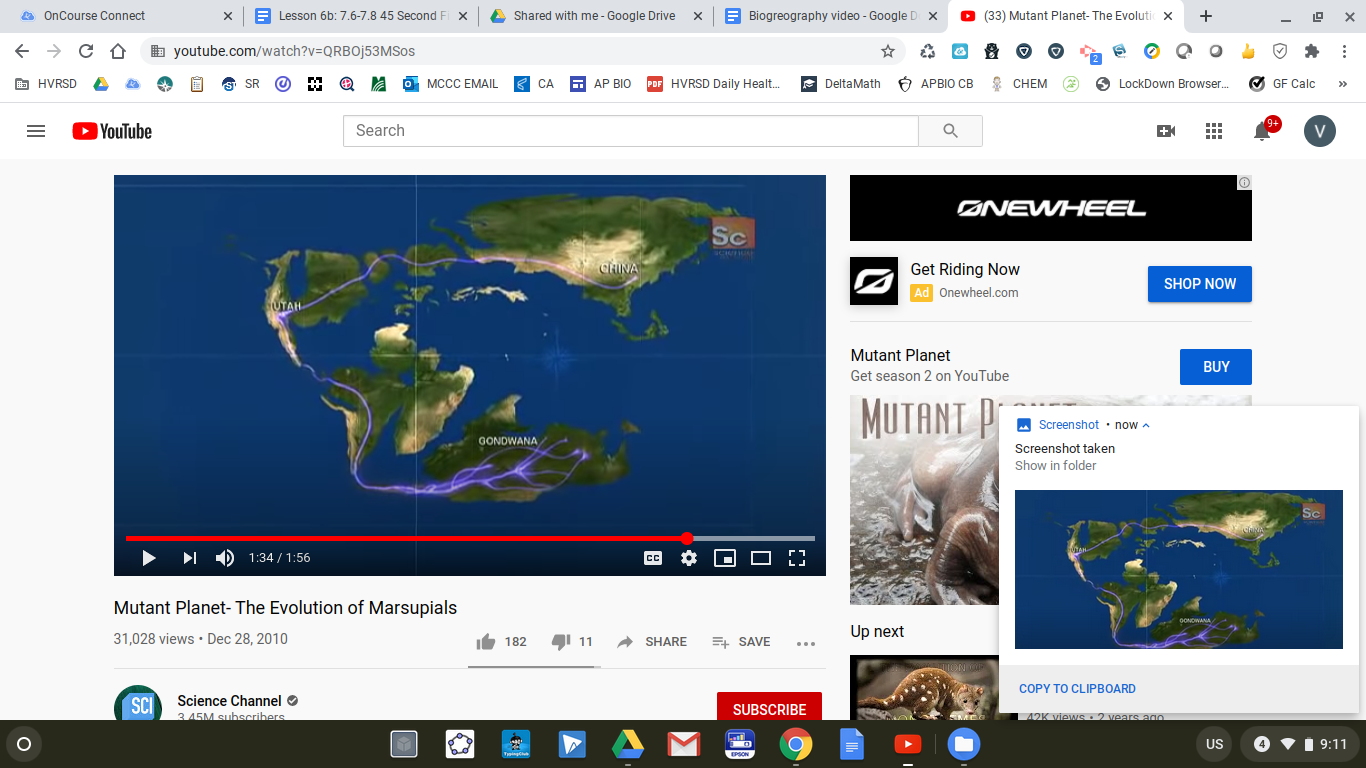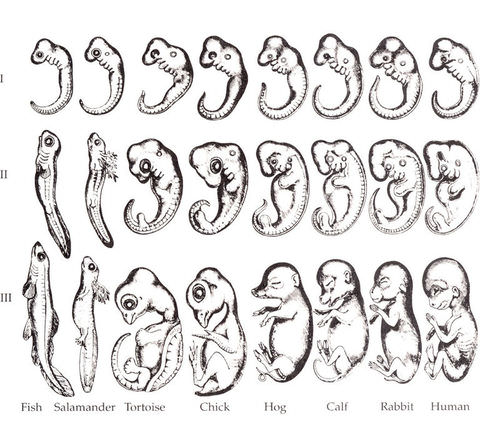Shownotes
My AP Biology Thoughts
Episode 7
Welcome to My AP Biology Thoughts podcast, my name is Victoria and I am your host for episode #7 called Unit 7 Evolution: Evidence of Evolution. Today we will be defining the 4 Pieces of Evidence for Evolution, giving examples of each, and making connections to the unit of evolution.
Segment 1: Introduction to Evidence of Evolution
What is evolution?
- A change in the allelic frequencies of a gene pool
- Continuous
4 Pieces of Evidence of Evolution -
- Fossil Record
- the preserved remains of traces of any organisms from the remote past, included both discovered and undiscovered
- Only the hard parts of an organism are preserved
- Fossil evidence can be either
- Direct (body fossils): bones, teeth shells, leaves
- Indirect (trace fossils): footprints, tooth marks, tracks, burrows
- Like timeline, different kinds of organisms do not occur randomly but are found in rocks in a consistent order, this is known as the law of fossil succession
- It is incomplete, and requires an unusual combination of specific circumstances for it to occur, creating many gaps in the fossil record
- Biogeography:
- Organisms located in one area of the planet are closely related than those found in other parts of the planet
- It describes the distribution of organisms, over geographical areas, both in the past and present
- Comparative Anatomy:
- The comparison of the anatomic features of different species
- 2 Key types of structures that support this
- Homologous structures
- Demonstrate a similar underlying anatomy due to shared evolutionary origin, but have evolved into a variety of distinct forms or speciation due to the presence of different selective pressures
- The more similar the homologous structures between the two species are, the more closely related they are likely to be
- Adaptive radiation through divergent evolution, as similar basic organisms have been adapted to suit various environmental niches
- Analogous structures
- Adaptations that have similar features and functions as a result of exposure to a common selective pressure, but have different underlying anatomies due to having unrelated evolutionary origins
- Shows convergent evolution as unrelated species have become structurally more alike due to exposure to shared selection pressures
- Vestigial organs
- Homologous features that still remain in organisms, but serve no function or purpose in that organism but were once present and functional in their ancestors
- Changes in the environment have caused these organs to be useless and as a result over they have lost their functionality, they show the evolutionary divergence of a species from a past behavior/activity
- Comparative embryology
- Studying the growing embryo in animals and plants show that closely related organisms go through similar stages of development
- Molecular Evidence:
- Identifying conservation in DNA and protein sequences as a basis for determining evolutionary relationships, the comparison of DNA sequences can show how different species are related
Segment 2: Example of Evidence of Evolution
- Evolution of the modern day horse (fossil record)
- Distribution of marsupials around the earth (biogeography)

Biogeography the distribution of species around the world. It all started with a supercontinent called Pangaea. Over millions of years, Pangaea drifted apart into separate continents in a phenomenon called continental drift. Different species were separated on different continents. In particular, a majority of the marsupial population stayed on the continent known as Australia. Here’s how it went…
The blue line illustrates the distribution of marsupials around the world. The highest concentration today is in Australia. The marsupial species that migrated there was free to breed, causing their populations to proliferate and diverge into new species. However, the marsupials on the rest of the planet could not face the competition and died out, lowering their concentration in those areas.
This is a perfect example of biogeography or distribution of a species around the world. The marsupials were separated by continental drift as pangaea split apart. Now, there is variance in the dispersal of their species around the world, with the greatest amount found in Australia.




Segment 3: Digging Deeper Evidence of Evolution
Fossil Record
- It reveals that, over time, changes have occurred in the features of organism living on the planet, aka changing the allele frequencies in the gene pool
- It also supports or suggests speciation through evolution, as changes to a common ancestor or ancestral species was responsible for the appearance of a later species
- Transitional fossils also reveal intermediary forms that occurred over time taken within a species/genus
Biogeography
- Closely related species are usually found in close physical proximity to one another, and that fossils from these regions resemble or share similar features to present organisms
- This also supports the idea of a species sharing a common ancestor/lineage
Comparative Anatomy
- The presences of homologous structures and shared embryonic development between species shows that they must come from or share a common ancestor
- The presences of analogous structures and vestigial organs reveal the role and influence of the environment on the organisms in the process of evolution
- For all of these to happen, you need a change in the allelic frequencies for these new or passed down traits to appear
Molecular Evidence
- All of these pieces of evidence have something in common… they have prove that there was a change in allele frequencies in the gene pool resulting in a change of traits
Thank you for listening to this episode of My AP Biology Thoughts. For more student-ran podcasts, make sure that you visit www.hvspn.com. Thanks for listening!
Music Credits:
"Ice Flow" Kevin MacLeod (incompetech.com)
Licensed under Creative Commons: By Attribution 4.0 License
http://creativecommons.org/licenses/by/4.0/
Subscribe to our Podcast
- Apple Podcasts
- Spotify
- Google Podcasts
- Stitcher
- YouTube
Connect with us on Social Media
Twitter @thehvspn